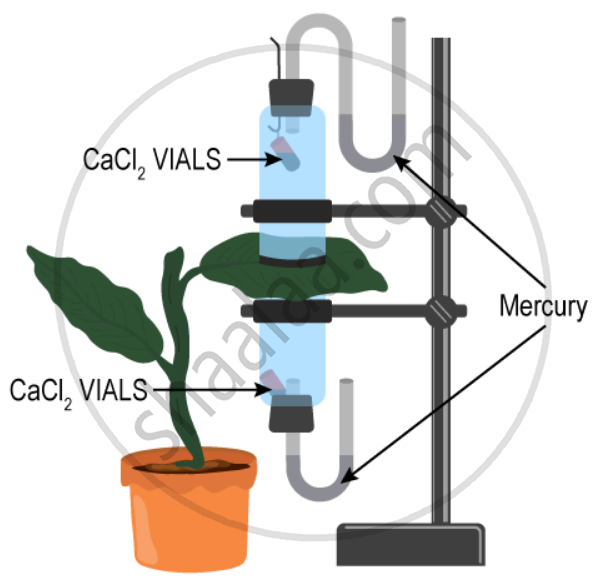Advertisements
Advertisements
प्रश्न
The upper layer of mesophyll in a leaf consists of elongated ground tissue called ______.
पर्याय
Spongy parenchyma
Palisade cells
Xylem cells
Phloem cells
उत्तर
The upper layer of mesophyll in a leaf consists of elongated ground tissue called palisade cells.
Explanation:
Palisade mesophyll is the extended ground tissue found in the upper layer of mesophyll in a leaf.
संबंधित प्रश्न
The apparatus shown in the following diagram is Garreau’s potometer designed to demonstrate unequal transpiration from the two surfaces of a dorsiventral leaf. Before keeping the leaf in between the cups, anhydrous calcium chloride (CaCl2) contained in two small vials were weighed and placed in both the cups. The ends of the cups were closed with corks through which two mercury manometers were connected. After few hours, CaCl2 vials were taken out and weighed again.

What do you mean by transpiration?
Where are stomata generally found?
Given below are the diagrams of a certain structure in plants in two conditions.

(i) Name the structure shown.
(ii) Name the parts numbered 1-5.
(iii) What is the most apparent difference between A and B in the structure shown?
(iv) Describe the mechanism which brings about the change in the structure depicted in A and B.
Given below is an experimental set up to study a particular process:

(i) Name the process being studied.
(ii) Explain the process named in (i) above.
(iii) Why is the pot covered with a plastic sheet?
(iv) Mention one way in which this process is beneficial to the plant.
(v) Suggest a suitable control for this experiment.
Given below is the diagram of an experimental set up to study the process of transpiration in plants. Study the same and then answer the questions that follow:

(i) What is the colour of dry cobalt chloride paper?
(ii) Is the experimental leaf a monocot or a dicot? Give a reason to support your answer.
(iii) Why axe glass slides placed over the dry cobalt chloride papers?
(iv) After about half an hour what change, if any, would you expect to find in the cobalt chloride paper placed on the dorsal and ventral sides of the leaf? Give a reason to support your answer.
(v) Define the term ‘transpiration’.
Mark the most appropriate answer in the following:
In the mechanism of opening and closing of stomata, the important factor is
Mark the most appropriate answer in the following:
Stomata open during day and close at night because:
Guard cells help in regulating the ______.
Write a short note on lenticular transpiration.
